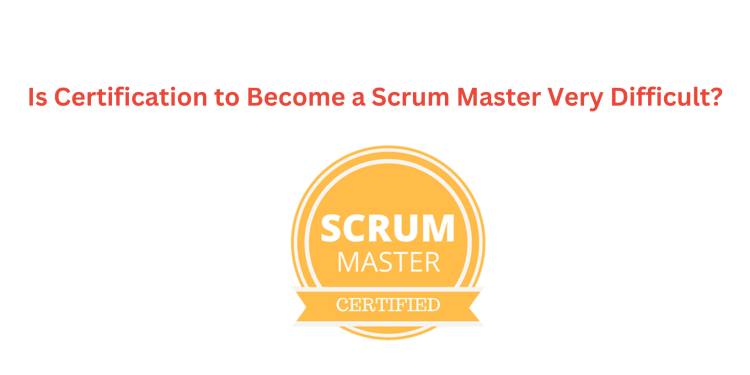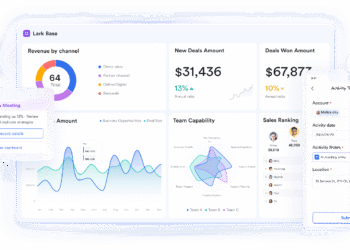The agile methodology has become most companies’ default framework in software development and project management domains. The main reasons for agile’s popularity are the increased collaboration, adaptability, and efficiency that it promotes. Conducting Scrum meetings is an integral part of the agile methodology, and as such, a scrum master who can organize those meetings and keep track of the day-to-day activities of the project plays an important role in the agile framework. If you are interested in becoming a scrum master, you might have questions in your mind as to what qualifications are required for this position, what is the best certification to become a scrum master, is a scrum master certification difficult, etc. In this article, we specifically aim to look at how difficult a scrum certification is and what is the most efficient way to prepare for this certification. We will also help you understand whether you should enroll in a CSM Training for a scrum master certification.
Demystifying Scrum Certification
Let’s begin by addressing the biggest elephant in the room – it is true that Scrum Master certification isn’t a walk in the park but, it is not an insurmountable mountain either. Like any significant endeavor, preparing for the scrum master certification exam requires dedication, learning and commitment. And joining a CSM course may probabaly be the best way to proceed with the preparation, especially if you are a beginner. The course content, of a typical CSM course is designed to ensure that you grasp the foundational principles of Scrum and are equipped to apply them effectively in real-world scenarios. So, let us go ahead and take a look at what a CSM certification typically involves:
1. Training:
Most Scrum Master certification programs require you to complete a formal training course. These courses cover essential concepts like Scrum theory, roles, events, artifacts, and practical implementation. The training sessions are designed to be informative, engaging, and interactive, allowing you to grasp the intricacies of the Scrum framework. Moreover, training helps you gain hands on experience on the various strategies and tools used by scrum masters.
2. Exam:
After completing the training, you must pass an exam to earn your certification. The exam assesses your understanding of Scrum principles, your ability to apply them, and your problem-solving skills. Remember that the scrum master certification exam is the first step you must take to begin a successful and lucrative career in the agile world. So while the exam may present challenges, thorough preparation and a clear understanding of the material can significantly increase your chances of success.
Is Difficulty a Barrier?
The perception of difficulty varies from person to person. What might be challenging for one individual could be a smooth ride for another. Rather than viewing difficulty as a barrier, consider it a stepping stone to growth and mastery.
Here’s the truth: Scrum Master certification is meant to challenge you. That’s simply the way it is! Because teh exam is meant to ensure that you possess the knowledge and skills to excel in your role. Remember that overcoming challenges is an essential part of personal and professional development. By embracing the learning process, you’re setting yourself up for success and equipping yourself to thrive as a Scrum Master.
Navigating the Learning Curve
Every journey has a learning curve, and Scrum Master certification is no exception. Here are some strategies to navigate the learning curve effectively:
1. Choose the Right Training:
Select a training program that aligns with your learning style and preferences. Look for courses that offer hands-on activities, case studies, and opportunities for interaction. A well-structured and engaging training program can make learning enjoyable and effective. Training should ideally involve practical guidance and real-world projects to enhance your understanding.
2. Practice, Practice, Practice:
Learning Scrum is not just about theory – it’s about practical application. Engage in exercises, simulations, and role-playing to gain hands-on experience. The more you practice, the more confident and capable you’ll become in your Scrum Master role. If you take the right CSM course, it will contain enough practice exercises with real-world scenarios that will help build your understanding of the concepts to be learned for the scrum master certification.
3. Seek Support:
Feel free to seek guidance from experienced Scrum practitioners or mentors. Learning from their insights and real-world experiences can provide valuable perspectives and shortcuts to understanding complex concepts. This aspect of your preparation will be automatically taken care of in a relevant scrum master certification training course.
4. Embrace a Growth Mindset:
Approach the certification process with a growth mindset. Embrace challenges as opportunities for learning and improvement. Be open to feedback and be willing to adjust your approach as you progress. Making mistakes and learning from them repeatedly is the most efficient way to perfect your skills and knowledge.
A Safe certification validates expertise in the Scaled Agile Framework (SAFe), an approach for implementing Agile practices across large organizations. This certification equips professionals with the knowledge to facilitate alignment, collaboration, and delivery at scale. Covering roles like SAFe Agilist or SAFe Practitioner, it imparts skills in agile methodology, lean thinking, and continuous improvement. SAFe certifications offer a comprehensive understanding of scaling Agile, enabling individuals to drive organizational agility, enhance productivity, and effectively navigate complex projects in today’s dynamic business landscape.
Real-World Benefits of Certification
While the journey to Scrum Master certification may have its moments of challenge, the benefits that follow are well worth the effort:
1. Career Advancement:
Certification enhances your marketability and opens doors to new opportunities. Organizations value certified Scrum Masters for their expertise in driving successful projects and promoting a culture of collaboration.
2. Enhanced Skills:
The certification process equips you with a deep understanding of Scrum principles and practices. You’ll be better prepared to lead teams, facilitate meetings, and navigate complex project dynamics.
3. Increased Confidence:
Certification boosts your confidence in your abilities as a Scrum Master. You’ll feel more comfortable guiding teams, making decisions, and handling challenges that arise during projects.
4. Industry Recognition:
Certification carries industry recognition and demonstrates your commitment to professional growth. It validates your expertise and signifies your dedication to mastering the Scrum framework.
Conclusion
So, is certification to become a Scrum Master very difficult? The answer is yes and no! However, the right question to ask is whether it is worth pursuing the scrum master certification journey. Then the answer is a big resounding yes!
Because even though there might be difficulties along the path, it’s crucial to recognize that the journey is attainable and fulfilling. Always keep in mind that obtaining a certification as a Scrum Master opens up opportunities for professional development, improved abilities, and promising career options. Of seeing it as a journey, try to perceive it as an opportunity, for personal growth and transformation. By dedicating yourself to learning, practicing and mastering the principles of Scrum you’re not just earning a certification; you’re developing into an self assured Scrum Master who can effectively lead teams and drive projects to success. So, embrace the challenge, seize the opportunity, and set forth on your path to becoming a certified Scrum Master with enthusiasm and determination.













